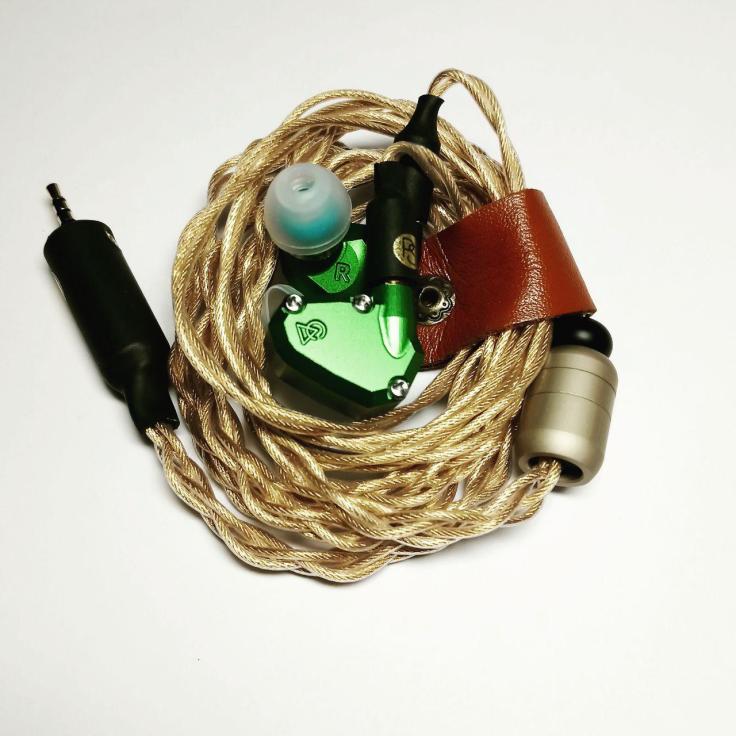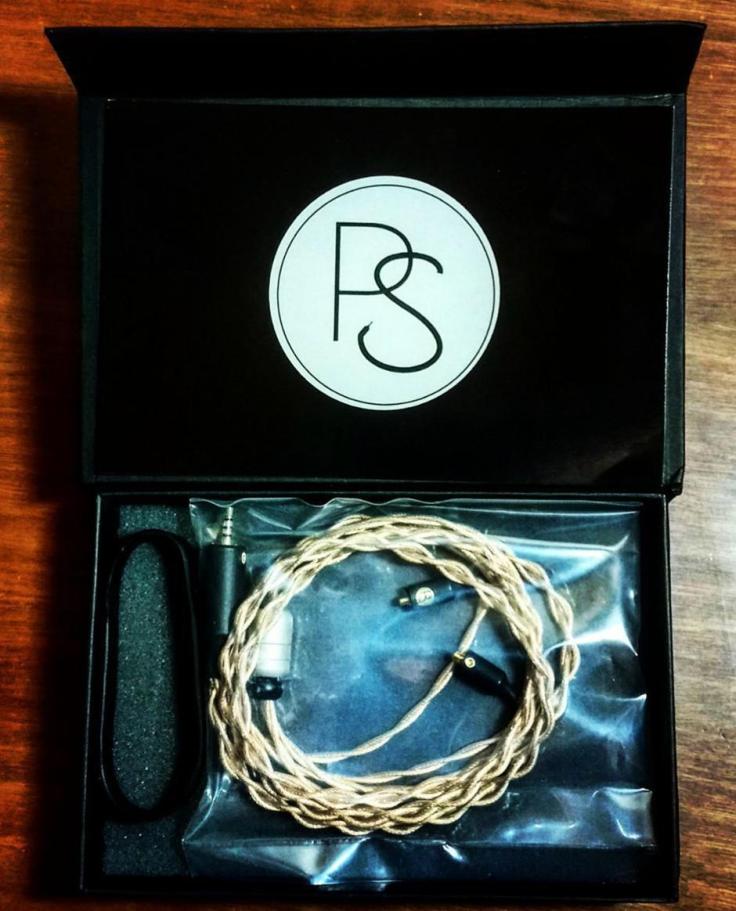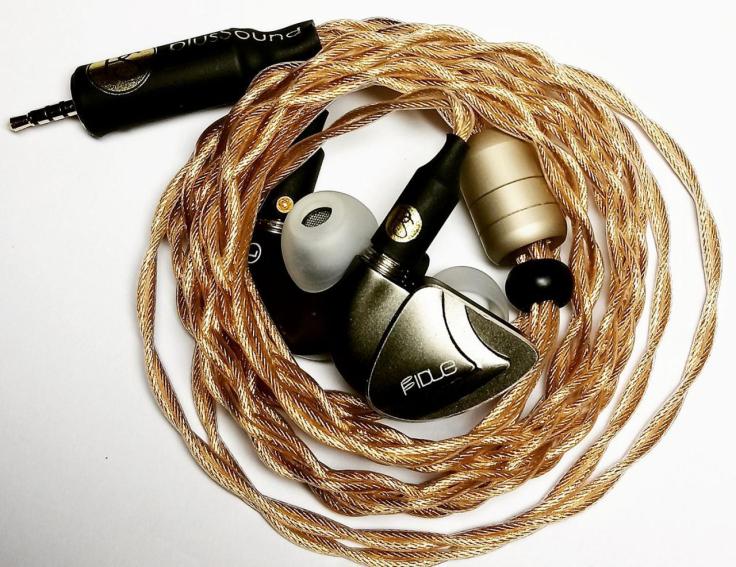PlusSound Exo Silver + Gold
Disclaimer
I would like to thank Christian from PlusSound for providing me with the Exo in exchange for my honest opinion. No incentive was given for a favourable review.
PlusSound Exo Silver + Gold
- Gauge: 26 AWG
- Geometry: 7 cores
- Materials: Silver + Gold Type 6 Litz
- Insulation: PS Insulation
- Connector type: 2-pin/CIEM
- Termination type: 2.5mm TRRS (balanced)
- Price: US$349.99
Links:
http://www.plussoundaudio.com
http://www.facebook.com/plussound
Preamble
PlusSound is probably best known as an aftermarket cable company, and indeed it all started when Christian Oliver thought it would be a nice project to build a cable for himself back in 2012. Soon after he found himself building cables for other people and a simple DIY project snowballed into the company PlusSound. While perhaps for the time being still best known for aftermarket cables, PlusSound has continued develop in the same entrepreneurial spirit it started off with by adding interconnects, accessories, their Cloud Nine Amplifier, and very recently even three brand new earphones of their own; the Spectrum, Prism and Gamut.
PlusSound has essentially grown into a one-stop-shop for audiophiles, which is not surprising considering Christian is himself a life-long audiophile. Indeed it seems that the driving force behind PlusSound's innovations stems from the same desire that drives all audiophiles to constantly expand their collection of gear. And much like every audiophile has their own preferences, so to do I sense a common theme among the various products PlusSound offers. It seems like everything is designed to be used, used again, and then used some more for good measure. It is a "utilistic" design, which is probably a horribly pseudo-academic buzzword I picked up while working with the wrong people, but it seems nonetheless appropriate here. Everything looks akin to that very pretty set of high-end tools your dad never let you use.
Build quality
This brings me to the main reason why I became interested in PlusSound, that (sorry for using the term again) utilistic design. It looks rock solid and that is important for someone like me who is an idiot and will break everything he gets his hands on.
When I received the cable it came in the newly designed packaging, an elegant satin black box with glossy artwork, that opened up to reveal a PlusSound branded rubber band for stacking and of course the Exo cable itself. It was great to immediately notice that the cable not only looked solid, it felt it too. The parts such as the 2-pin connectors and termination are light in weight, but feel very strong. The y-split is chrome aluminium with silver aluminium slider and they look and feel great. Moreover, PlusSound offers many customisation options and I love how Christian made a cable where all the details match the colour of the material used in the cable itself. So a silver cable with chrome logos on the plug and connectors, chrome y-split and silver slider, it all works very well together to make a great looking cable. This is something I really like about PlusSound, it is great fun to not just look at the various materials that they offer for the cable itself, but also the many parts and in some cases even the type of braiding. It feels like designing your CIEMs, a real custom experience!
Of course the big new thing about this particular Exo cable was that it came with the newly released PS insulation. Christian explained it was a great improvement over the previous insulation and so I made sure to borrow an older Exo cable from my friend Oscar in order to compare. As soon as I picked up the cable I was very impressed by its suppleness. It is slightly thicker due to the insulation, but incredibly supple for a 4-wire cable and as such very comfortable to wear. In part this could also have to do with the lack of pre-bent heat shrinks as ear guides, something that does make me wonder about what long-term (years) use will do to those parts of the cable due to rubbing and skin oils that can affect the insulation. Time will tell, but for now it is a gorgeous looking and feeling cable that I can use for hours on end without any sign of discomfort or worry about the build quality.
Source
Usually I briefly list the source I use because the source itself has an impact on sound, but I don't really go into it beyond that. Not in this case because while the cable is terminated in 2.5mm TRRS for the balanced out on my AK70, I actually ended up using it from SE out (via an adapter). The reason for this is that the laid-back nature of the AK70's balanced out did not, to my ears, synergise well. It caused a loss of resolution (not detail) and dynamics. While the resulting sound was certainly very nice and as easy on the ears as a breath of fresh air cooling your face on a warm summer's day, it was technically not at all what I expected to hear. Note decay seemed extremely short, resulting (for instance) in less texture to strings and the strike on a tympani would miss its natural resonance. Switching to the SE out livened up the sound and to me sounded much more crisp and clear, with the resolution I was expecting to hear. So all impressions are based on using the Exo from the SE out on my AK70, unless stated otherwise. The IEMs used were the Custom Art Ei.3, Rhapsodio Saturn and briefly the Rhapsodio Zombie.

Presentation
The Exo Silver + Gold is a brighter cable aimed primarily at improving detail retrieval and clarity, and in this it performs remarkably well. It has a short note decay that means it is not the most natural sound, but what this does is create a wonderfully airy and detailed image that is incredibly precise in its placement of notes. Notes sit with great confidence in the image and are crisp and clearly defined against the background. The stage is well extended creating a large image with outstanding separation. My Custom Art Ei.3 are normally warm and smooth with thick notes and quite an organic sound, but the Exo changes that to thinner, very well defined notes that provide excellent layering. When listening to Beethoven's Missa Solemnis I was really impressed by how well the different sections of the choir were defined.
While the Exo separates everything very well, it is not at the cost of coherency and while bright and clear, it stays musical and smooth. With warmer IEMs emphasis in classical music shifts towards the string sections and yet they don't overpower the bass section. There is enough impact there to ensure those come through with enough presence to maintain a sense of harmony. It is not as strong as in some copper-based cables I have used, but it never becomes clinical or boring and I often found myself getting carried away in the airy and detailed, yet wonderfully flowing sound this created.
Bass
The bass of the Exo Silver + Gold is tight and hits hard, something I believe is quite often found in silver-based cables. The mid-bass is reduced to create a brighter tone and the sub-bass is extended to hit hard and bring some excitement to what might otherwise become a boring signature. This means the Exo will work well with warmer IEMs and when Christian told me what he was sending over, I knew exactly what I wanted to pair it with... The Rhapsodio Saturn. The Saturn are warm, bass-oriented dynamic driver IEMs that I had previously tried pairing with copper-based cables and it just made the Saturn weak in the knees. All fluff and no punch. Well, the Exo certainly solved that issue! Oh boy does the Saturn's bass have a nice kick to it! I keep getting caught off guard when listening to Carbon Based Lifeforms' album Interloper, where the first track has a nice deep bass, but the second track, 'Right Where it Ends', punches Right Between the Eyes! In fact, just for the bass alone I will keep the Exo paired with the Saturn, but the synergy has a whole is excellent and really did for the Saturn what I was hoping for.
Of course I also tried my trusty Ei.3 and those are tuned for EDM with a fast and tight bass that was complimented by the Exo. The reduced mid-bass does brighten up the signature more than I would like for EDM, but the tightness and impact of the bass still provides plenty of energy. Moving on to classical music I found that, as expected, the bass section was lacking its natural decay and the presence of the bass section was greatly reduced. While this was not in line with my personal preferences, I can readily see how it is something that might well suit others. The bass section was pushed back, but thanks to its sub-bass impact and the excellent clarity and separation of the cable as a whole, still easily discernable. It makes for a more composed signature and ideal for someone more interested in hearing the violin, rather than having the tympani thunder all over it or the cello moving in front all the time.
Mids
Bright, clear and detailed mids, that is what you can expect from the Exo Silver + Gold. When listening to classical music I am impressed by how well it separates the various instruments. When I listen to Brahms' 4th symphony the many layers usually melt together in a stream of complicated, but very enjoyable music. With the Exo all the different layers are picked apart while still retaining a connection between the layers. Not the most harmonious, but enjoyable in its own way. It becomes very easy to pick out a single instrument to focus on and in general I found details to come through even when I was not paying much attention to the music.
Due to the brighter tonality the Exo favours female vocals, which are presented bright and very clear, but maintains a comfortable smoothness. While I was adjusting to the brighter tonality I had a few moments where I braced myself, as soprano Elin Manahan-Thomas would push for the high notes, and yet every time the Exo proved itself capable of providing brightness while still doing justice to that crystal clear voice. Male vocals lack a bit in body, which is more noticeable the deeper the voice, but like bass instruments they are still easily discernable. This means that while the choir might sound a bit brighter overall, every voice can still be found with great easy. This is, I think, a great example of the trade-off the Silver + Gold makes. It gives up some of its natural tonality in order to reveal more detail, more easily.
Treble
The Exo Silver + Gold is a silver cable with added to it a small percentage of gold in order to avoid some of the pitfalls of a pure silver cable. One area where this is important is the treble. Silver cables can push it a little far and as a result cause some sharpness, but the addition of gold seems to do the trick, as this is clearly not the case for the Exo. I am pretty sensitive to treble spikes and find the Exo's treble to be comfortable and non-fatiguing. It is a bright and airy treble that does not push too far forward, but again is lacking a little in natural sparkle. This is very noticeable in the Nutcracker's 'Dance of the Sugar Plum Fairy'. While the fairy dances light on her feet and twirls through the air, I am missing the hint of fairy dust in the celeste (the main instrument used). Perhaps in this case it is more a 'plum fairy', missing the sugar found in copper cables to add sweetness to the notes. Indeed my preferences clearly differ here, but the trade-off makes sense. The treble is precise, clearly defined and adds lots of air to let the stage breath. Even the Saturn, which I felt lacked a little in the highs, got a better-defined and more easily discernable treble to them. Another reason why the Exo is staying on them.

Comparisons
-Exo Copper-
(This comparison was done with both cables from the balanced out.) Both cables are part of the Exo series, but the Silver + Gold has of course the new PS insulation. The improvement in ergonomics is significant; the new PS insulation makes the Exo very comfortable and less likely to push or pull on the IEMs when moving around, something I noticed with the older insulation.
In terms of sound the two cables offer differences in line with what can be expected based on the materials. The Exo Copper is a warmer cable with a more natural tonality and while it offers more air than most copper cables, the Silver + Gold easily outperforms it in terms of air and clarity, as well as stage dimensions. The Copper offers a warmer and more intimate setting by comparison. The bass of the Copper is thicker and does not go very deep, whereas the Silver + Gold has a very tight and hard-hitting bass. In the mids I find that the Copper does not do vocals quite as well. Vocals are clear, but not entirely clean, something I noticed quite clearly while listening to Caro Emerald, where her voice was not entirely smooth when paired with my Ei.3. The Silver + Gold does vocals better both in terms of clarity, as well as smoothness. I loved how I could hear every breath of London Grammar's Hannah Reid. In the treble I found that the Copper had a warmer tone, but it was a little bit more forward to better balance with the stronger bass presence. The Silver + Gold by comparison had a brighter, slightly more sharply defined treble, that was nonetheless never harsh.
I would say the Copper is the more exciting cable, whereas the Silver + Gold is the more even and easy-going cable. It is very pleasant to listen to and almost has something ethereal to it by comparison.
-Effect Audio Lionheart-
In terms of build quality these cables are very close. The Exo has lighter and slightly bigger parts, but both feel very durable. While the cable is thicker, I would give the Exo the edge in suppleness, but in comfort I find both equally great to use.
Lionheart is a copper-based cable with a warm, very natural and incredibly harmonious sound, and it will come as no surprise that given my preferences this is my current favourite cable. It is also more expensive than the Exo Silver + Gold ($499.90 vs. $349.99), but it is interesting to illustrate how each cable has its own strengths. There is a clear difference in presentation between the two and very noticeable in the note decay I have mentioned previously. Lionheart has quite resonant notes that contribute to the very natural character of the cable. Combined with a warmer tonality, it allows for instruments to separate based on tone, where the Exo separates instruments by creating air around them. Notes on the Exo are more clearly defined and a bit thinner, which allows for details to come through more easily. In this I feel that Lionheart is the more engaging cable that demands your attention, whereas the Exo is more easy-going and will present all the details to you even if you are not paying full attention. It might therefore well be that for casual listening, the Exo comes across as the better cable. For bass Lionheart has less sub-bass impact and more mid-bass presence, while the Exo is clearly much tighter and hits harder. In the mids both cables are clear. Lionheart has sweet, alluring mids with amazing vocals, whereas the Exo has mids that are like a bright clear day, offering crisp and clear vocals and well-defined instruments. In the treble Lionheart is by comparison a little more attenuated but I feel better extended, with a sweet sparkle to it. The Exo once again presents a clear and crisp sounding treble that is a bit brighter.

Conclusions
The PlusSound Exo Silver + Gold presented me with an interesting paradox that I think very nicely illustrates the quality of this cable. The brightness and clarity it brings is not at all in line with my preferences, I prioritise tonal accuracy and generally gravitate towards a warmer sound, yet I still end up coming back to the Exo to provide me with a fresh, cool breeze to clear my mind. In fact, the Exo became a firm favourite of mine to pair with the Rhapsodio Saturn and I look forward to experimenting with source synergy and other IEMs at a later date, as I feel the Exo presented me with a really interesting experience with a brighter and clearer sound and there is more to explore yet.
The Exo Silver + Gold is an excellent cable. It has a great build quality and the new PS insulation creates an incredibly supple and comfortable cable. I feel it is a great option for those looking to improve clarity and detail in their IEMs.
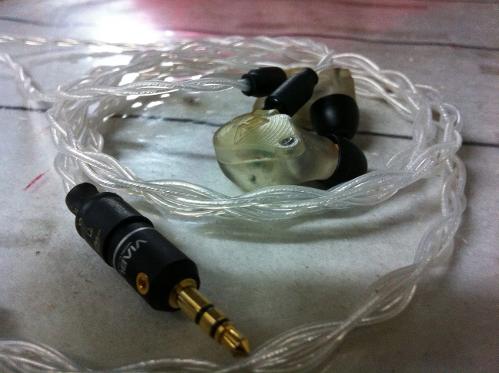




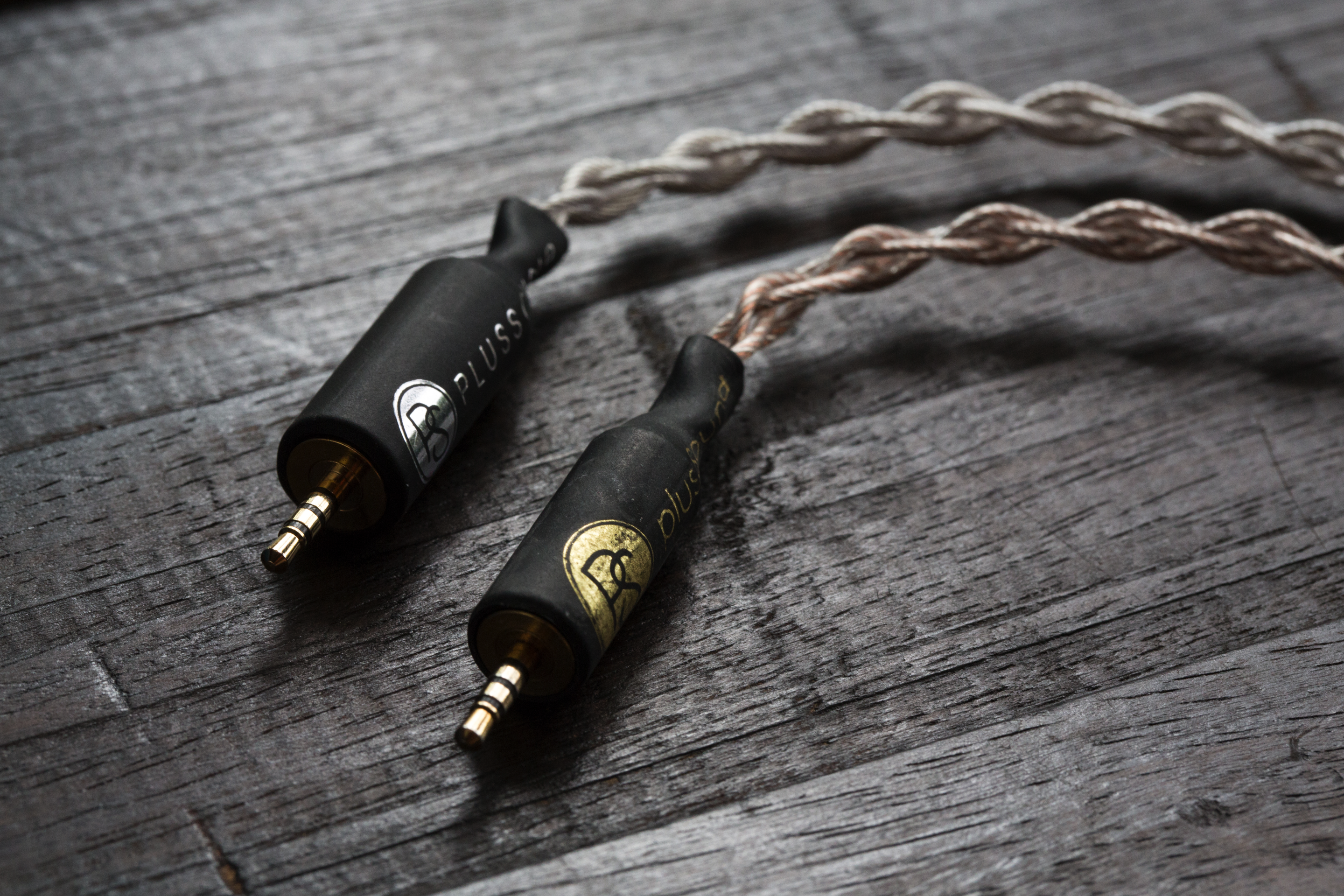


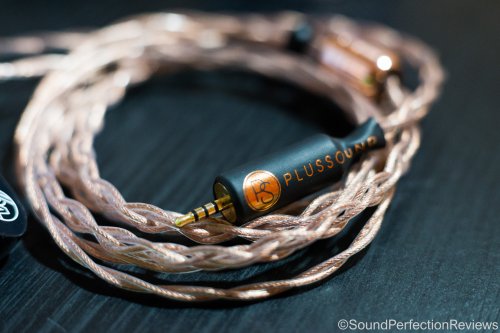








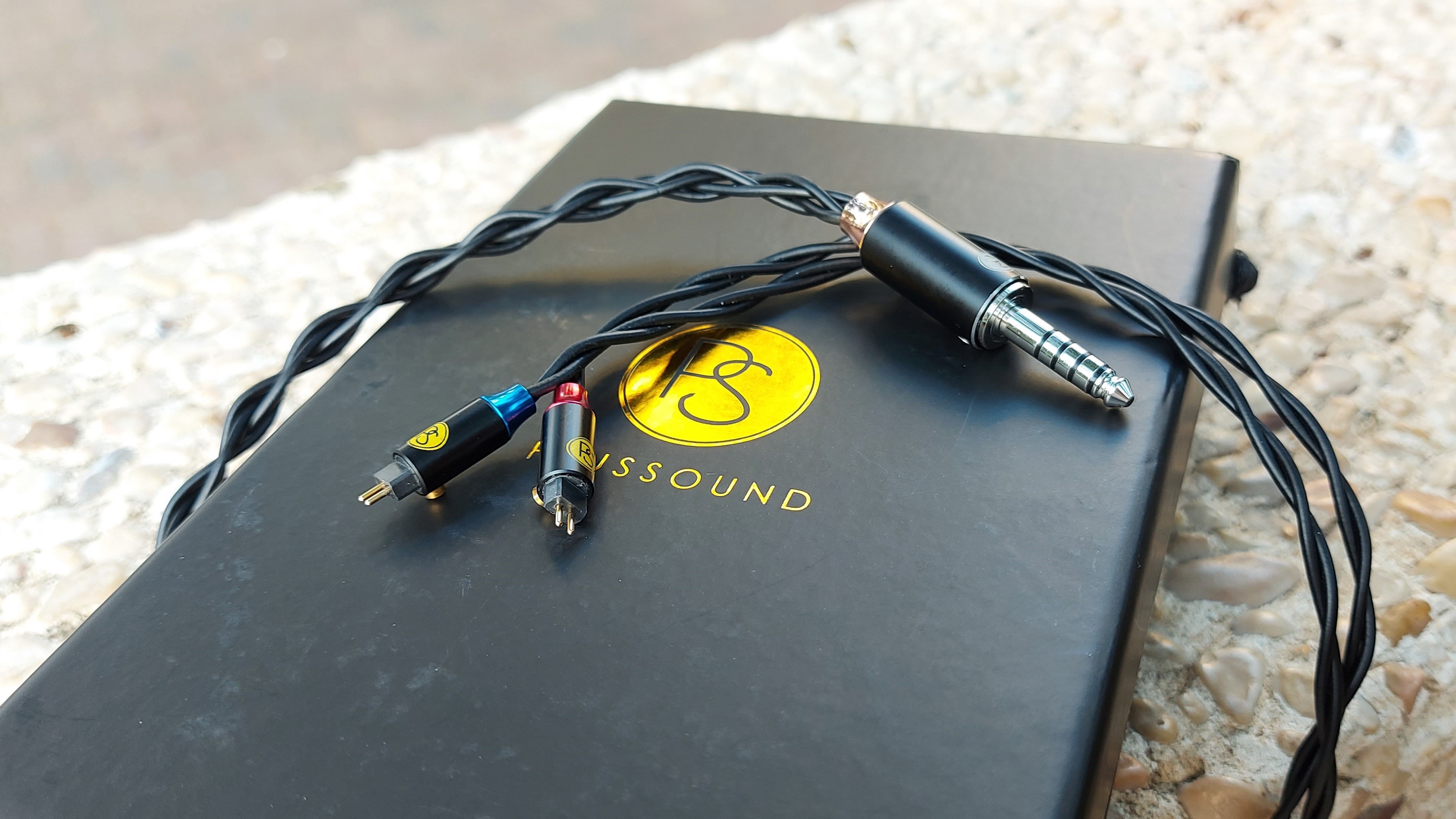

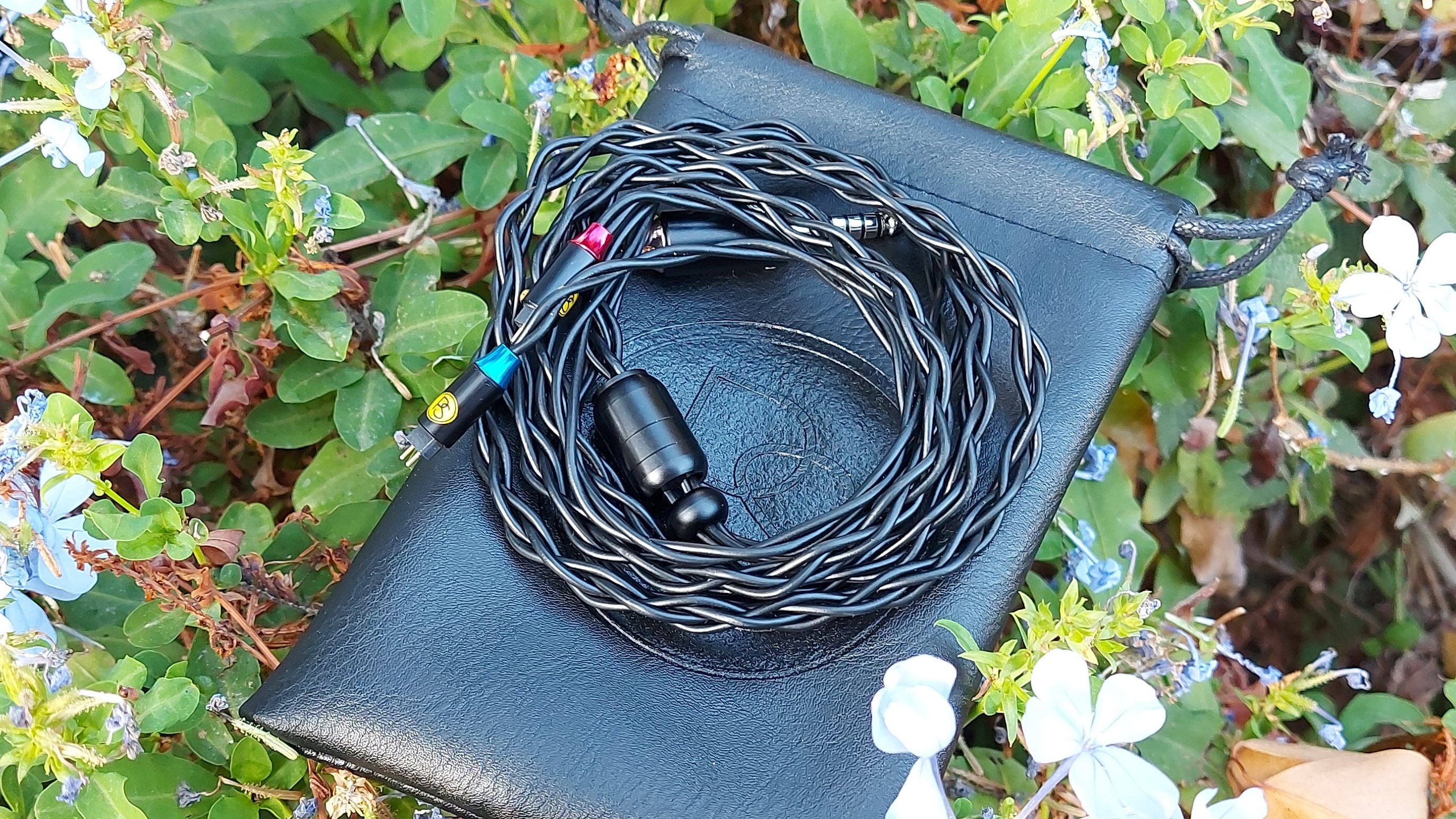

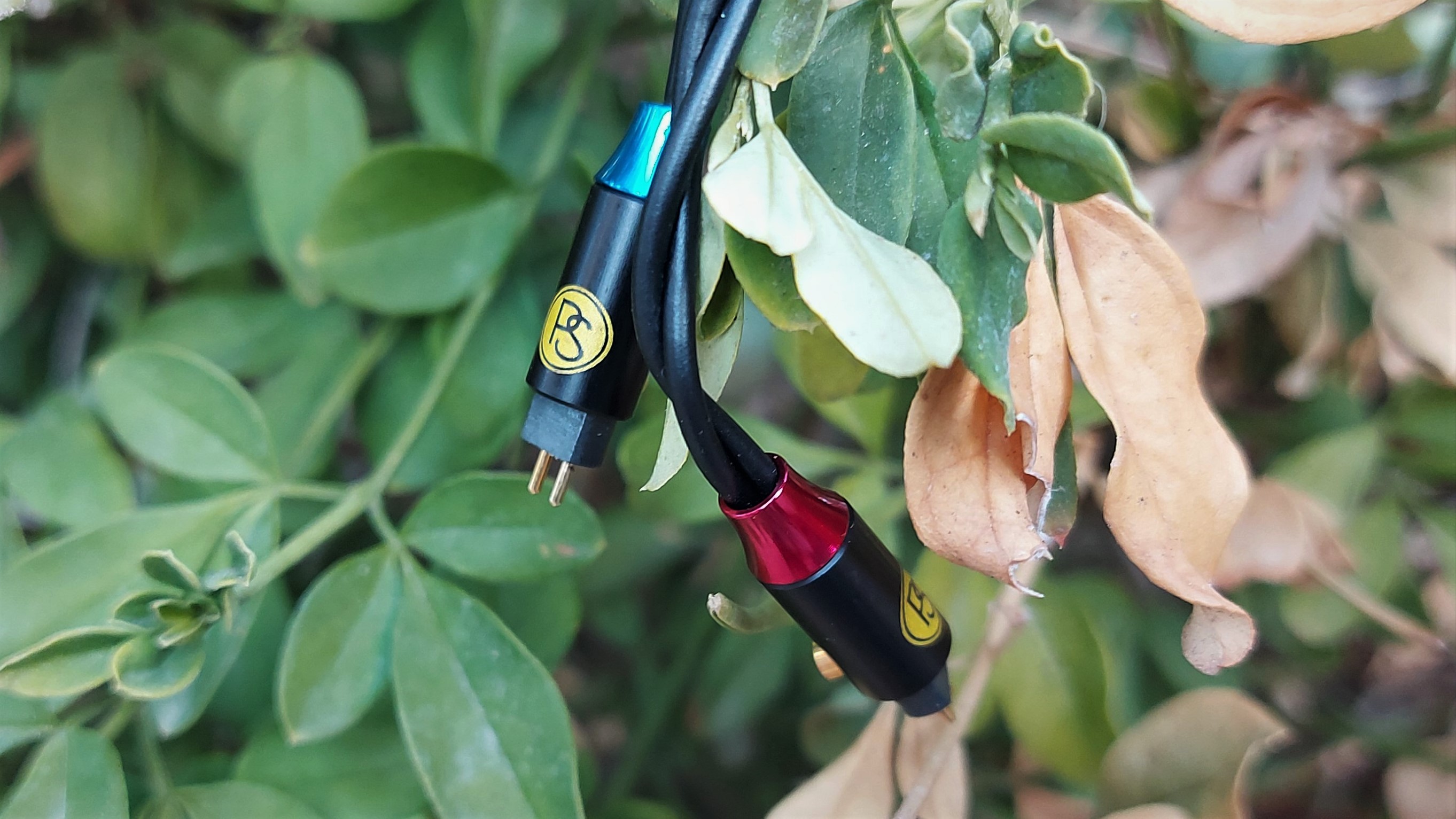

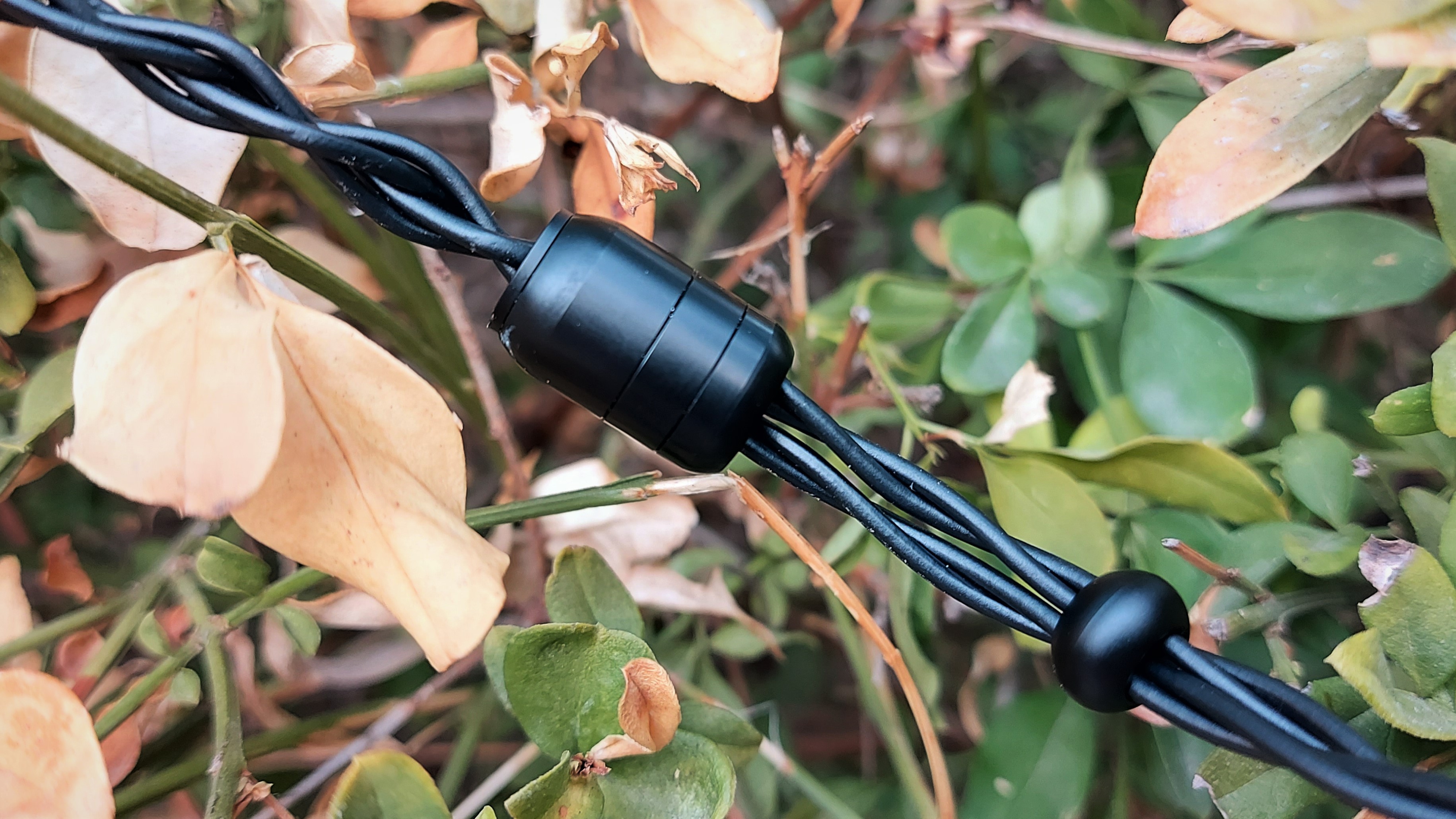

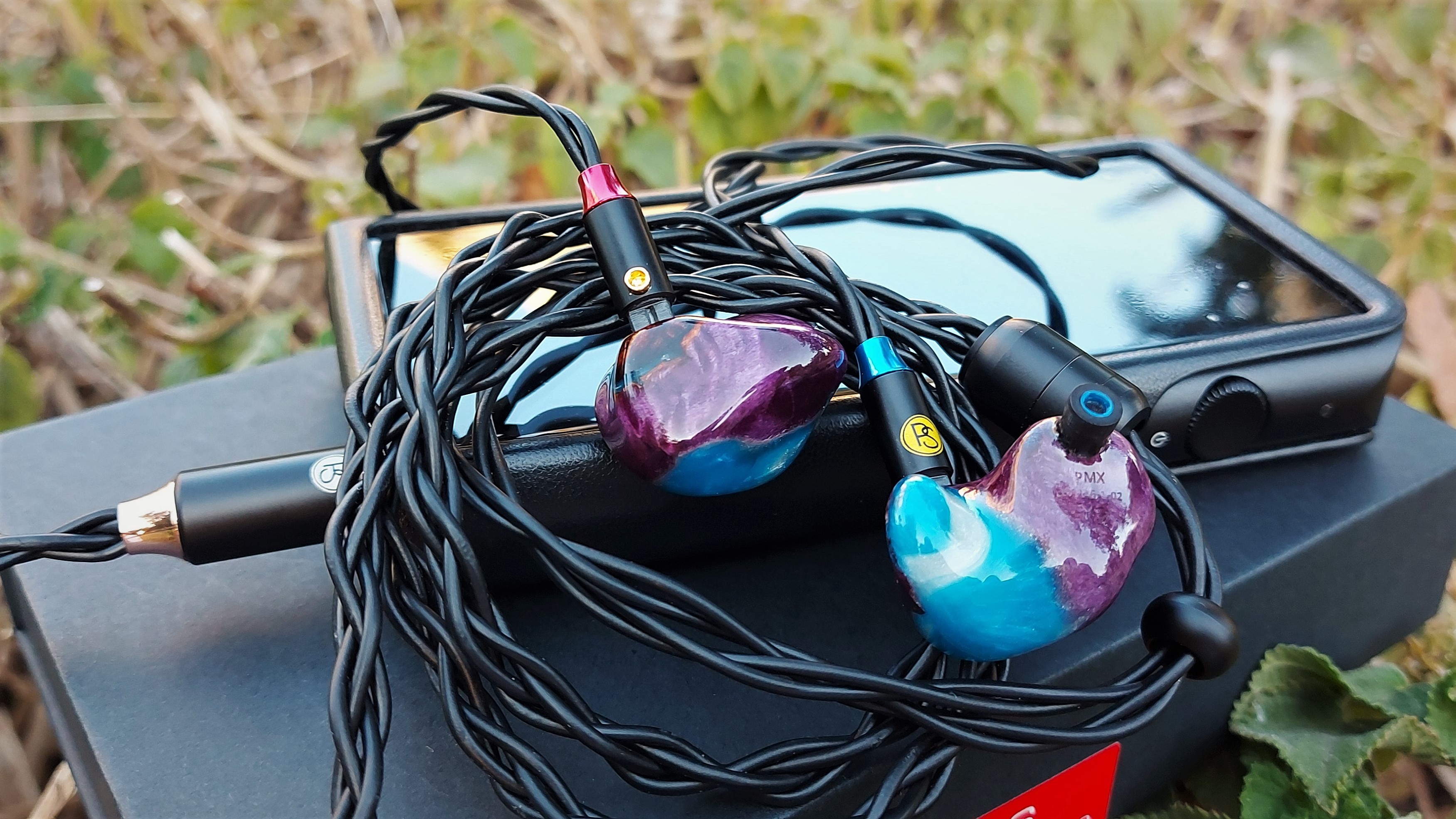













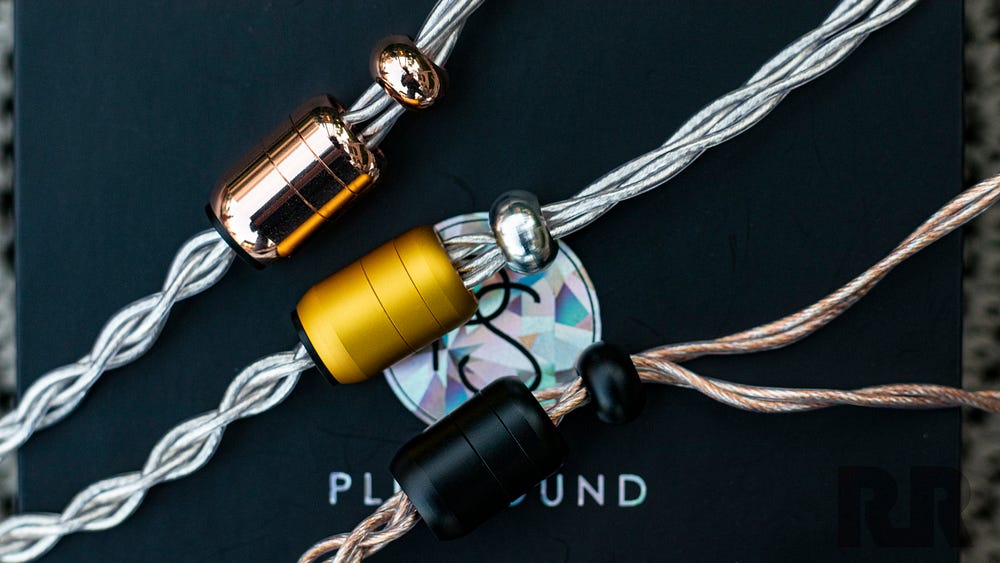



















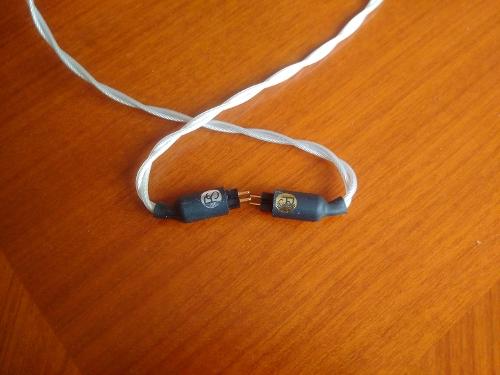

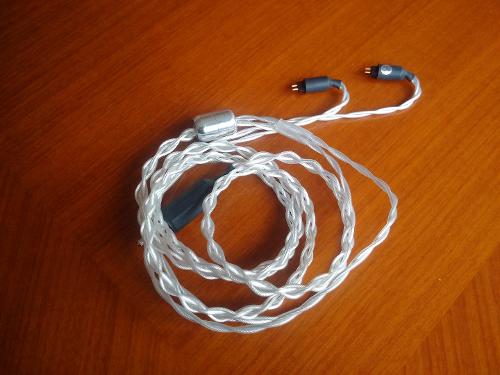
 Thank you
Thank you 